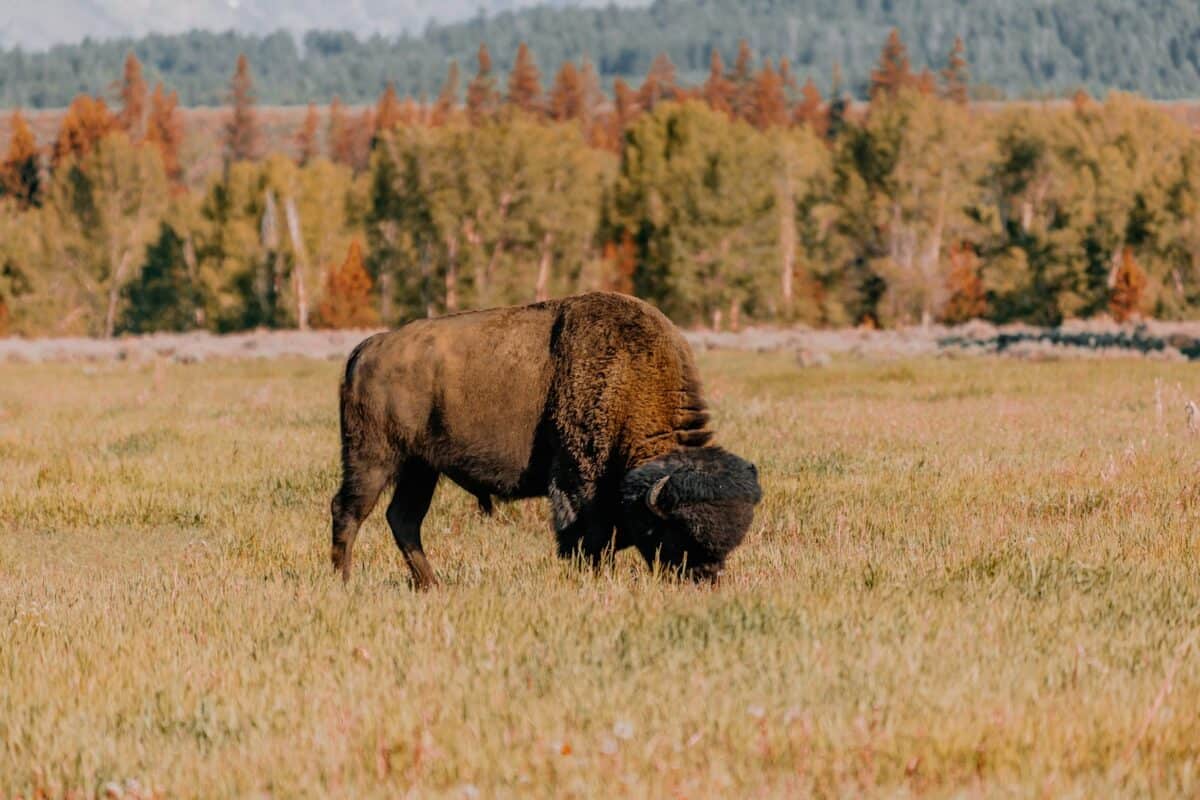The Rocky Mountains stretch over 3,000 miles from British Columbia to New Mexico, creating one of North America’s most challenging winter environments. With temperatures plummeting below -40°F, snowdrifts reaching heights of 20 feet, and howling winds that can strip flesh from bone, winter in the Rockies is not for the faint of heart. Yet, remarkably, a diverse array of wildlife has evolved incredible adaptations to not just survive but thrive in these harsh conditions. From thick fur coats and specialized circulation systems to unique hibernation strategies and remarkable food storage techniques, these 15 animals demonstrate nature’s ingenious solutions to extreme weather challenges. Their stories of survival against seemingly impossible odds provide both inspiration and scientific insight into the remarkable resilience of wildlife in one of North America’s most unforgiving landscapes.
11. Mountain Goats – Masters of the Alpine Zone

Mountain goats (Oreamnos americanus) are perhaps the most iconic winter survivors in the Rocky Mountains, often spotted on precarious cliff edges even during the harshest blizzards. These sure-footed mammals possess several remarkable adaptations that make them perfectly suited for extreme winter conditions. Their most visible winter feature is their double-layered coat—a dense woolly undercoat topped with longer guard hairs that can grow up to 8 inches long. This insulation is so effective that snow can accumulate on their backs without melting, indicating minimal heat loss.
Beyond their impressive coats, mountain goats have specialized hooves with hard outer shells and soft, grippy pads that provide exceptional traction on icy surfaces. Their metabolic rate slows during winter, allowing them to conserve energy while feeding on lichens, mosses, and whatever vegetation they can uncover by digging through snow with their hooves. Most impressively, mountain goats don’t migrate to lower elevations during winter like many alpine animals; instead, they move to south-facing slopes where strong winds keep areas relatively clear of deep snow, allowing them access to food throughout the season.
10. Wolverines – The Winter Warriors

Wolverines (Gulo gulo) are legendary for their ability to thrive in conditions that would kill most other mammals. These muscular members of the weasel family range throughout the higher elevations of the Rocky Mountains, where they’ve evolved remarkable cold-weather adaptations. Their dense, oily fur is completely frost-resistant, while their oversized paws act like natural snowshoes, distributing their weight across the snow’s surface. These adaptations allow wolverines to travel up to 15 miles daily across deep snowfields in search of food, making them one of the most mobile winter predators in the Rockies.
What truly sets wolverines apart is their relationship with snow—they actually require persistent spring snowpack for denning and raising their young. Female wolverines dig elaborate tunnel systems into deep snowdrifts, creating protected birthing chambers where temperatures remain stable despite external extremes. Wolverines are also exceptional scavengers, capable of detecting and digging out carcasses buried under several feet of snow. Their powerful jaws can crush frozen bones, allowing them to extract nutrients from long-dead animals that other predators cannot utilize. This ability to find food in seemingly barren winter landscapes makes them true champions of Rocky Mountain winter survival.
9. Snowshoe Hares – The Color-Changing Survivors

Snowshoe hares (Lepus americanus) employ one of nature’s most visible winter survival strategies in the Rocky Mountains—their remarkable seasonal camouflage transformation. As winter approaches, these medium-sized leporids shed their brown summer coats and grow pure white fur, leaving only the tips of their ears black. This dramatic color change, triggered by changing daylight hours rather than temperature, provides nearly perfect camouflage against snowy backdrops, helping them evade predators like lynx, coyotes, and great horned owls. The transition takes about ten weeks and represents an ingenious evolutionary adaptation to seasonal changes.
Beyond their color-changing capability, snowshoe hares possess oversized hind feet that work like natural snowshoes, distributing their weight to prevent sinking into deep snow—a critical advantage when fleeing predators. During the harshest winter periods, these hares switch their diet from tender summer vegetation to woody browse, including twigs, bark, and conifer needles—foods most mammals can’t digest. Their specialized digestive system, which includes microbial fermentation and coprophagy (re-ingesting certain fecal pellets), allows them to extract maximum nutrition from these fibrous foods. This dietary flexibility, combined with their camouflage and mobility adaptations, enables snowshoe hare populations to maintain stable numbers even through the most brutal Rocky Mountain winters.
8. American Bison – The Ice-Age Survivors
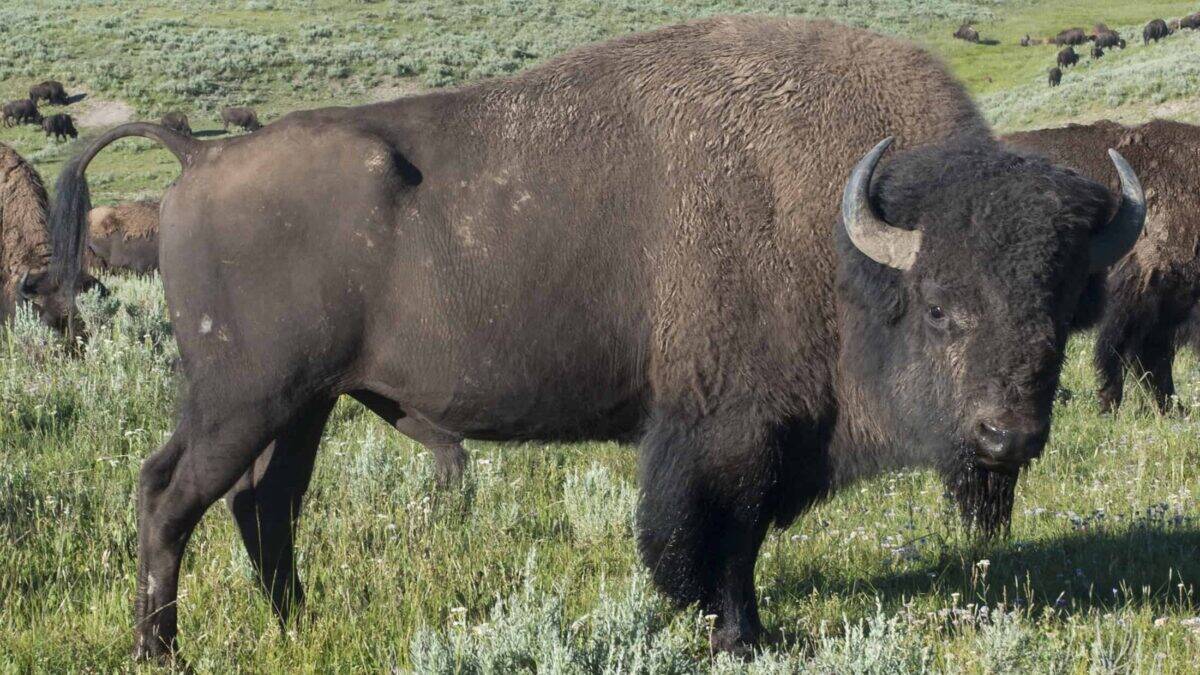
American bison (Bison bison) stand as living relics of the Ice Age, carrying ancient adaptations that allow them to withstand the brutal winters of the Rocky Mountain region. These massive bovids, weighing up to 2,000 pounds, possess a thermal regulation system perfectly suited for extreme cold. Their shaggy winter coat contains hollow hair shafts that trap air, creating exceptional insulation, while a thick layer of fat adds additional protection. This insulation is so effective that snow can accumulate on their backs without melting—a phenomenon known as “snow blanketing” that actually provides additional insulation by trapping body heat beneath the snow layer.
What truly distinguishes bison from other Rocky Mountain ungulates is their snow-clearing ability. Using their massive heads as natural snowplows, bison can sweep aside snow up to 18 inches deep to access the dormant grasses beneath. Their specialized digestive system efficiently processes these low-nutrient winter grasses, extracting maximum caloric value from minimal forage. In particularly harsh conditions, bison will form tight groups, with young animals positioned in the center for protection from wind and predators. Their remarkable cold tolerance is evident in how they face into blizzards rather than turning away—a counterintuitive behavior that prevents snow from accumulating in their thick fur and allows them to maintain visibility in whiteout conditions.
7. Grizzly Bears – The Hibernation Specialists

Grizzly bears (Ursus arctos horribilis) represent one of nature’s most sophisticated approaches to winter survival in the Rocky Mountains through their remarkable hibernation process. Unlike true hibernators, grizzlies enter a state called torpor—their heart rate slows from 40-70 beats per minute to just 8-12, body temperature drops by only about 10 degrees, and metabolic rate reduces by 50-60%. This allows them to remain somewhat alert to potential threats while conserving tremendous amounts of energy. Before entering this state, grizzlies undergo hyperphagia, consuming up to 20,000 calories daily and gaining up to 400 pounds of fat—essentially storing months’ worth of energy in their bodies.
What makes grizzly hibernation particularly remarkable is their body’s efficient recycling systems. Despite not eating, drinking, urinating, or defecating for up to 7 months, grizzlies maintain muscle mass and bone density by recycling body wastes into protein. Female grizzlies even give birth and nurse cubs during hibernation, converting stored fat into nutrient-rich milk without consuming any food themselves. Their hibernation dens, often dug into hillsides or under tree roots at elevations above 6,500 feet, maintain temperatures just above freezing regardless of external conditions. When emerging in spring, grizzlies have lost approximately 30% of their body weight but remain strong enough to immediately begin foraging—a testament to the extraordinary efficiency of their winter survival strategy.
6. Canada Lynx – The Deep Snow Specialists
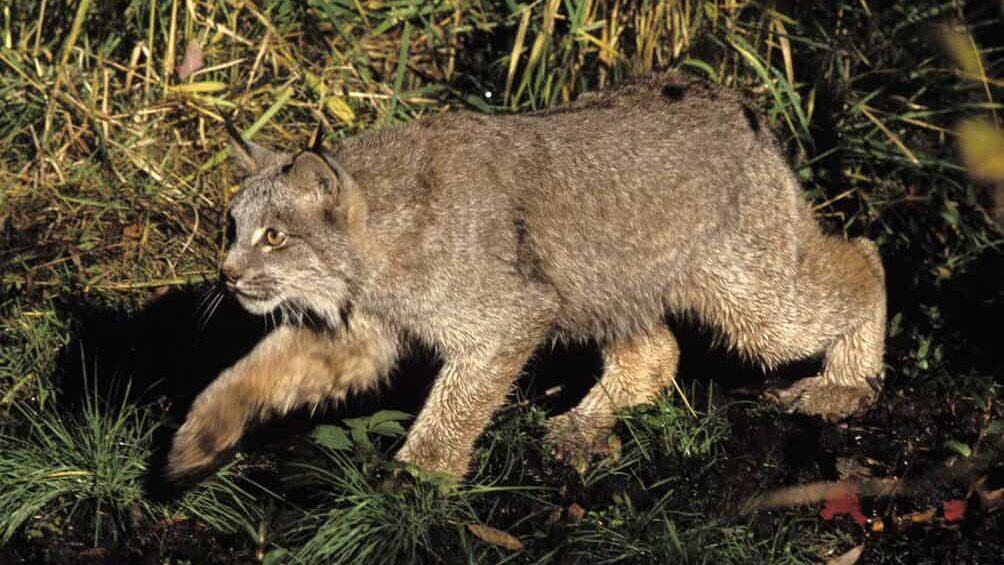
Canada lynx (Lynx canadensis) have evolved into specialized winter predators in the Rocky Mountains, with adaptations perfectly suited for hunting in deep snow conditions. Their most distinctive feature is their disproportionately large, furry paws that function as natural snowshoes, distributing their weight across snow surfaces and allowing them to move efficiently where other predators flounder. These enormous paws can spread to nearly 4 inches wide when fully extended, giving lynx a significant advantage when pursuing prey across snowfields. Their legs are also unusually long for their body size, helping them navigate through deep snow while keeping their bodies relatively dry.
The winter survival strategy of lynx is inextricably linked to snowshoe hares, which constitute up to 96% of their winter diet in the Rockies. Lynx have evolved exceptional hunting techniques specifically targeting these prey animals, including strategic ambush methods and remarkable leaping abilities that allow them to pounce from up to 20 feet away. Their specialized vision detects the slightest movements in low-light conditions, while their large ear tufts amplify sounds, helping them locate prey moving beneath the snow. During particularly harsh winter periods when hare populations decline, lynx can reduce their metabolic requirements and survive on fewer calories—a temporary adaptation that helps them weather the cyclical boom-and-bust population patterns of their primary prey species.
5. Bighorn Sheep – The Vertical Migrators
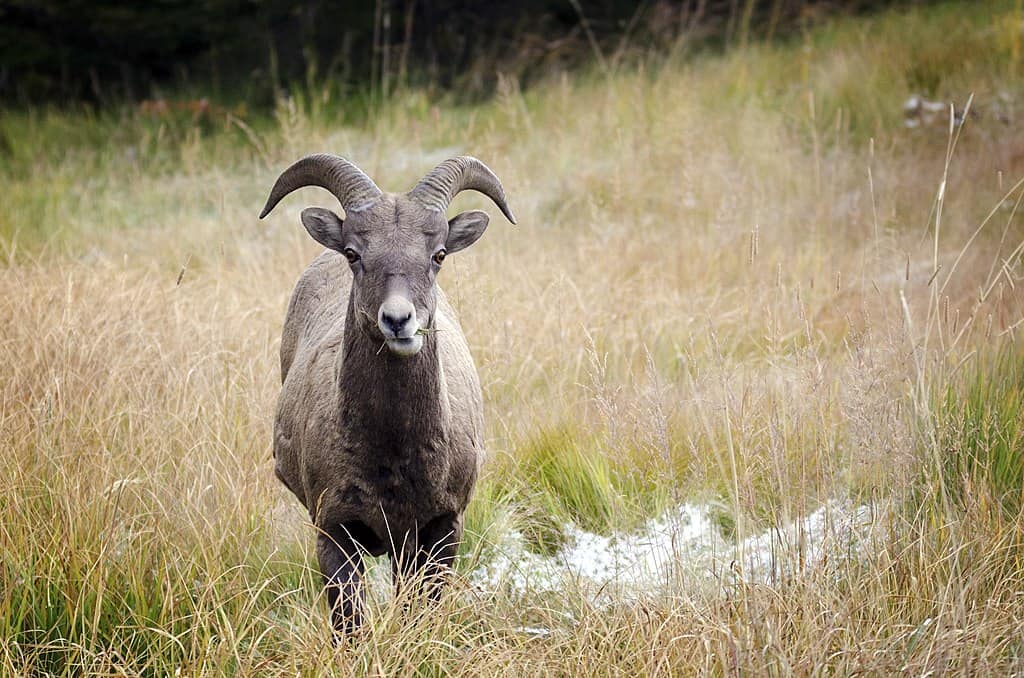
Bighorn sheep (Ovis canadensis) employ a distinct winter survival strategy in the Rockies through vertical migration rather than the horizontal journeys typical of many ungulates. As winter intensifies, bighorn herds move from high alpine summer ranges to wind-swept, south-facing slopes and ridges at lower elevations where solar radiation and prevailing winds keep areas relatively clear of deep snow. This strategic positioning allows them to access critical winter forage while minimizing energy expenditure. Their specialized digestive system, featuring a multi-chambered stomach with specialized microbes, enables them to extract maximum nutrition from dried grasses, lichens, and woody plants that constitute their winter diet.
Physically, bighorns possess remarkable cold-weather adaptations, including a double-layered winter coat with hollow guard hairs that trap heat exceptionally well. Their compact body design, with short legs and a rounded torso, minimizes surface area relative to body mass, reducing heat loss—a principle known as Bergmann’s Rule. Perhaps most importantly, bighorns exhibit impressive social thermoregulation behaviors, forming tight groups during severe weather events with lambs protected in the center. These huddles reduce individual heat loss by up to 30% during blizzard conditions. Their ability to navigate treacherous, icy mountain terrain with precision also allows them to escape predators like mountain lions, who are significantly disadvantaged in deep snow and on icy surfaces compared to the sure-footed bighorns.
4. Clark’s Nutcrackers – The Avian Planners
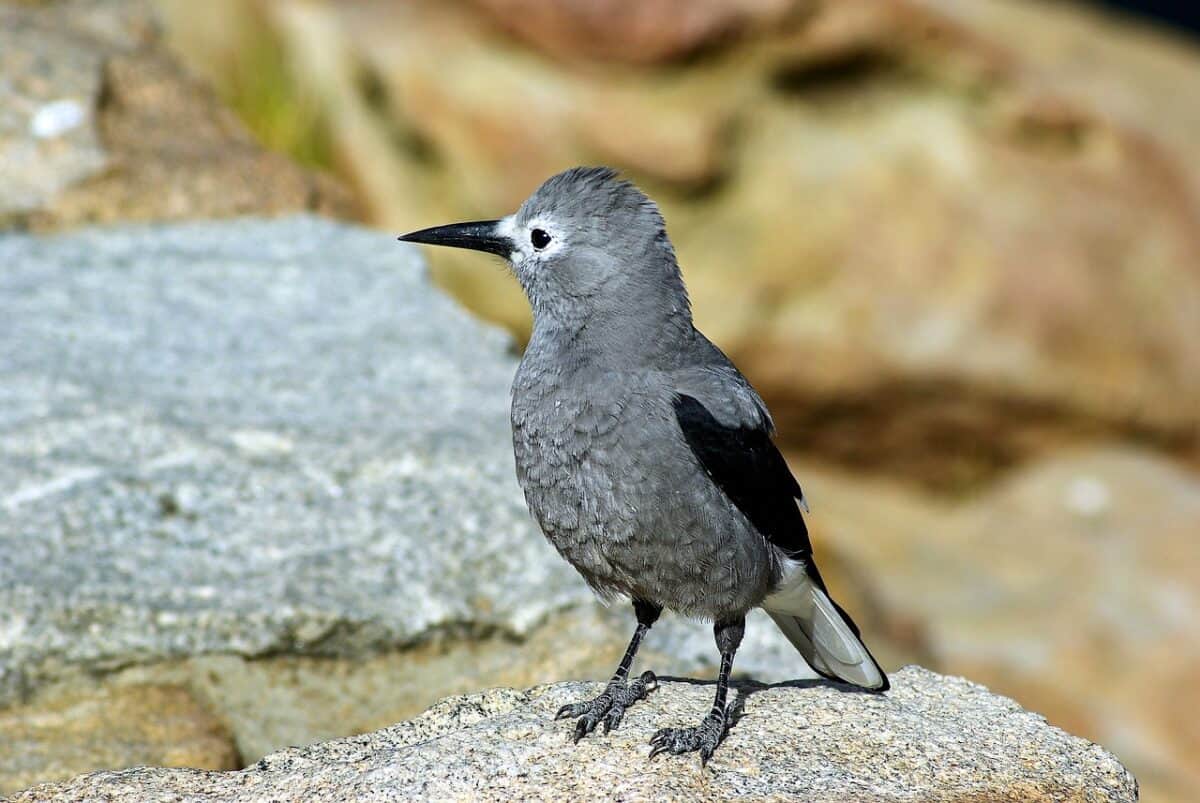
Clark’s nutcrackers (Nucifraga columbiana) demonstrate that strategic planning, rather than physical adaptations, can be an effective winter survival strategy in the Rocky Mountains. These medium-sized members of the corvid family begin preparing for winter months in advance through an extraordinary food caching system. Each fall, a single nutcracker collects and stores between 30,000-100,000 pine seeds, creating up to 2,500 separate cache sites across their territory. Their specialized sublingual pouch can hold up to 90 seeds at once, allowing efficient transport from pine trees to storage locations. What’s truly remarkable is their spatial memory—nutcrackers can remember the locations of thousands of seed caches for up to nine months, finding them even when buried under feet of snow.
Beyond their caching behavior, Clark’s nutcrackers possess physical adaptations that help them withstand Rocky Mountain winters. Their dense plumage provides excellent insulation, while specialized scales on their legs and feet resist freezing temperatures. They’ve also developed behavioral adaptations to conserve energy during severe weather, including entering a state of regulated hypothermia during extremely cold nights, where they lower their body temperature by several degrees. This remarkable combination of advance planning, specialized anatomy, and behavioral flexibility allows Clark’s nutcrackers to remain active year-round at elevations exceeding 11,000 feet—heights where most other birds have long since migrated to warmer climes. Their survival strategy is so effective that they often begin breeding in February, when snow still blankets the high Rockies.
3. Mule Deer – The Snow-Zone Navigators

Mule deer (Odocoileus hemionus) have developed a sophisticated approach to Rocky Mountain winter survival through strategic migration and physiological adaptations. Unlike some mountain ungulates that move vertically to avoid deep snow, mule deer undertake substantial horizontal migrations, traveling up to 150 miles from summer ranges to wintering grounds at lower elevations. These migrations follow ancient routes memorized and passed down through generations, with deer navigating precisely to areas with manageable snow depths and available browse. Their migration timing is triggered by changes in day length rather than immediate weather conditions, allowing them to reach winter ranges before severe weather makes travel difficult.
Physiologically, mule deer undergo remarkable seasonal changes to enhance winter survival. Their specialized digestive system shifts from processing summer’s protein-rich vegetation to extracting nutrients from woody browse like sagebrush, mountain mahogany, and bitterbrush—plants that contain compounds toxic to many mammals but which mule deer can detoxify through specialized liver enzymes. Their metabolism slows significantly, reducing caloric requirements by up to 30%, while their winter coat features hollow guard hairs that provide exceptional insulation. Perhaps most distinctive is their stotting gait—a unique bounding locomotion where all four feet leave the ground simultaneously—which allows them to move efficiently through moderate snow depths while conserving energy. This combination of behavioral and physiological adaptations enables mule deer to maintain relatively stable populations even through the Rockies’ harshest winters.
2. River Otters – The Aquatic Winter Specialists

North American river otters (Lontra canadensis) represent one of the Rockies’ most specialized winter survival strategies by exploiting the insulating properties of water. While seemingly counterintuitive, water bodies in winter actually provide relatively stable environments compared to air temperatures that can fluctuate wildly. Even when rivers and lakes freeze over, river otters maintain access through self-created breathing holes and utilize the water beneath ice as an insulated hunting zone. Their dense, dual-layered fur—among the thickest in the animal kingdom with up to 850,000 hairs per square inch—creates an essentially waterproof barrier that traps warm air against their skin, allowing them to swim in near-freezing water for extended periods without hypothermia.
Beyond their remarkable insulation, river otters possess physiological adaptations for aquatic winter foraging, including specialized blood vessels in their legs and feet that minimize heat loss through countercurrent heat exchange. Their streamlined bodies, powerful tails, and webbed feet make them efficient underwater hunters, able to catch fish that become sluggish in cold water. During particularly harsh conditions, river otters adjust their activity patterns to become more nocturnal, taking advantage of slightly warmer nighttime water temperatures in some habitats. They also create elaborate den systems in riverbanks with underwater entrances that remain accessible even when surface ice reaches maximum thickness. This combination of specialized insulation, physiological adaptations, and behavioral flexibility allows river otters to remain active throughout Rocky Mountain winters when many terrestrial mammals must hibernate or migrate.
1. Alpine Ptarmigan – The High-Altitude Specialists
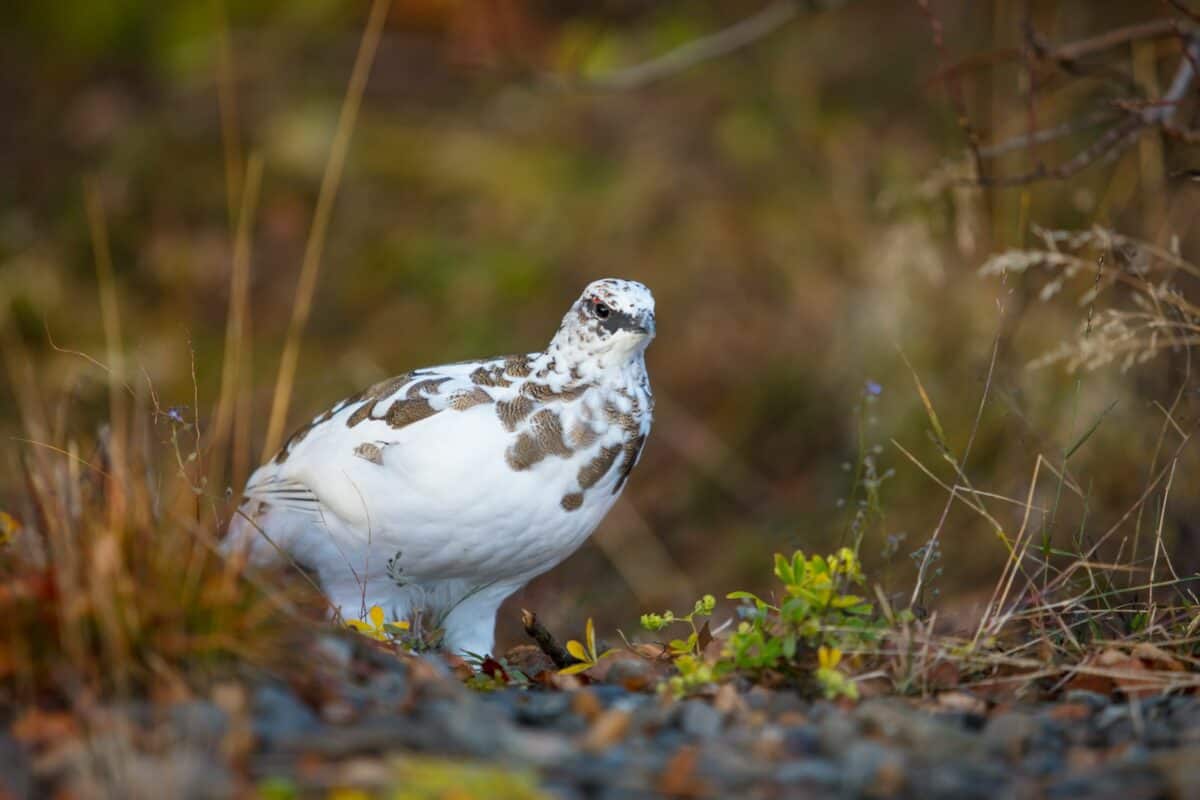
White-tailed ptarmigan (Lagopus leucura) hold the distinction of being the only birds that remain year-round in the alpine zones of the Rocky Mountains, where winter temperatures regularly plummet below -40°F with hurricane-force winds. These remarkable grouse possess extraordinary cold-weather adaptations, beginning with their complete seasonal color transformation—from mottled brown in summer to pure white in winter—providing perfect camouflage against snowfields. Their entire bodies are covered in feathers, including specialized feathering on their feet that acts like natural snowshoes and insulates their toes from freezing temperatures. Even their nostrils are covered with tiny feathers that warm incoming air before it reaches their lungs.
The behavioral adaptations of ptarmigan are equally impressive. During blizzards, they create snow burrows up to six feet long that shield them from wind and maintain temperatures near 32°F regardless of external conditions—a critical energy-saving strategy. Their winter diet consists almost exclusively of buds, twigs, and seeds from alpine willows and birches, foods they access by walking atop crusty snow to reach branches or by digging snow pits. Their digestive system has evolved specialized bacteria that help break down woody plant material, while their enlarged cecum allows for efficient extraction of limited nutrients. Perhaps most remarkably, ptarmigan can reduce their metabolic rate and enter a state of temporary torpor during extreme conditions, lowering their body temperature and heart rate to conserve energy.
Conclusion:
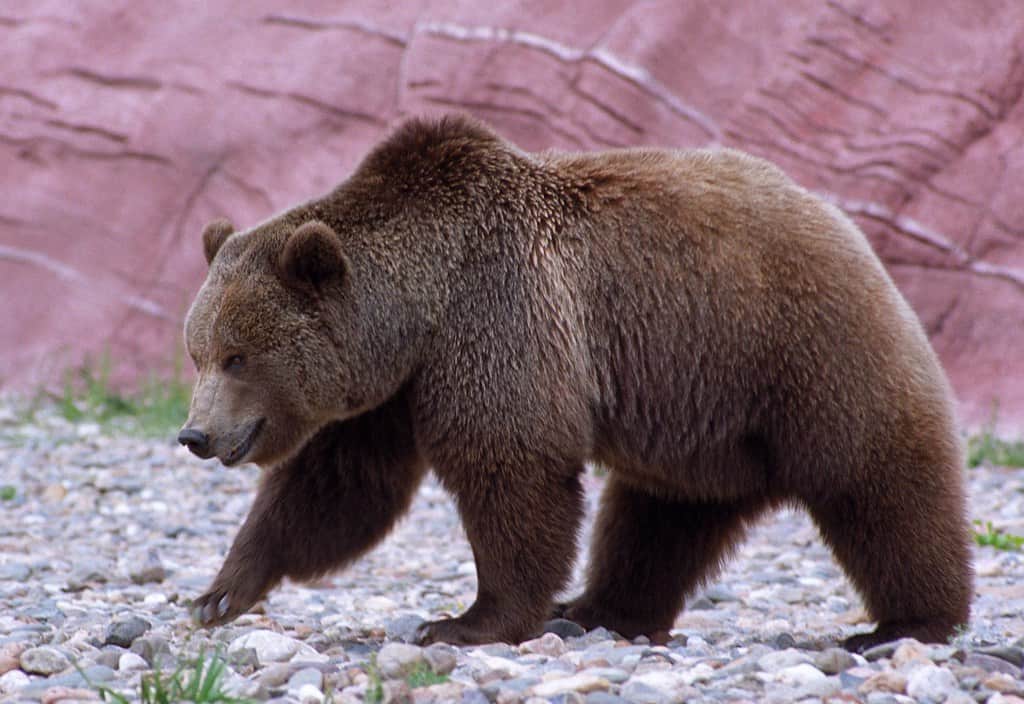
Surviving the brutal winters of the Rocky Mountains is no small feat, yet the 11 animals highlighted in this article reveal nature’s astonishing ingenuity in overcoming extreme adversity. From the snow-burrowing ptarmigan and the food-stashing Clark’s nutcracker to the frost-resistant fur of the wolverine and the thermal physiology of the grizzly bear, each species demonstrates a unique strategy finely tuned to one of North America’s harshest climates. These adaptations—whether behavioral, physiological, or anatomical—are not only survival mechanisms but also remarkable testaments to the power of evolution in shaping life to fit even the most punishing environments.
Collectively, these animals don’t just endure the Rockies’ winters—they thrive, contributing to the region’s complex and resilient ecosystems. Their presence reminds us that wild places still harbor creatures capable of inspiring awe, and that preserving these habitats is essential to maintaining the delicate balance that allows such survival stories to unfold each year. As climate change increasingly threatens snowpack, seasonal cycles, and habitat continuity, the survival of these winter specialists may ultimately depend on our ability to protect the rugged wilderness they call home.
- 11 Animals That Survive Brutal Winters in the Rockies - August 10, 2025
- The Deepest Dwelling Sharks That Lurk Beneath US Waters - August 10, 2025
- 10 Remote US Islands Where Nature Still Rules - August 10, 2025

